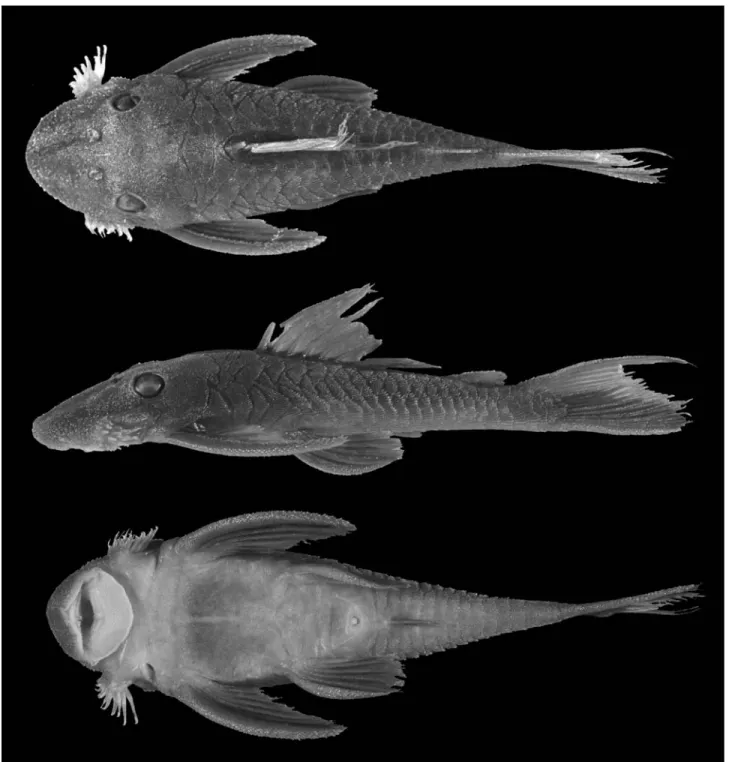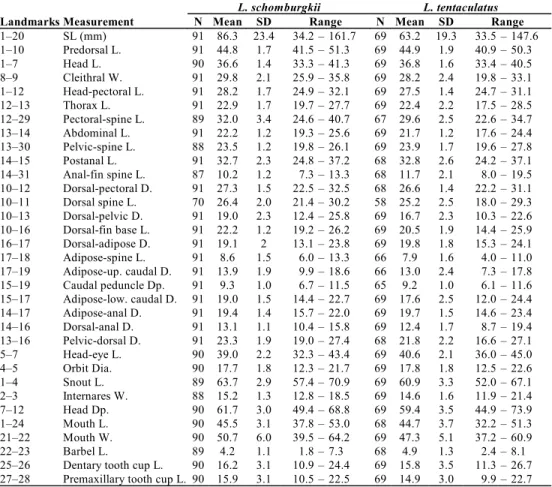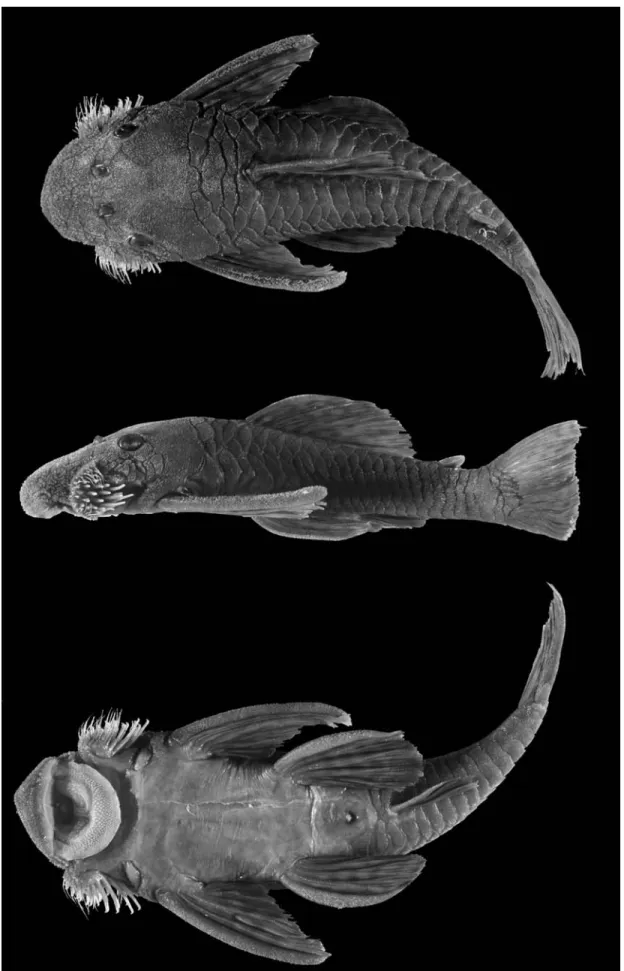The loricariid catfish genus Lasiancistrus (Siluriformes) with descriptions of two new species
Texto
Imagem




Documentos relacionados
known species of the genus regarding the color pattern, be- ing promptly distinguished by having two lateral whitish oval spots located slightly before the middle of each elytron
latifrons , by the presence of wide dark transverse bars on body and bands on the fins ( vs. body entirely dark or with pale or dark spots); and by the conspicuous dark
xiru from all others species of the genus (including the species complex A. scabripinnis): the presence of two conspicuous humeral spots (first humeral spot vertically elongate
The probability of attending school four our group of interest in this region increased by 6.5 percentage points after the expansion of the Bolsa Família program in 2007 and
i) A condutividade da matriz vítrea diminui com o aumento do tempo de tratamento térmico (Fig.. 241 pequena quantidade de cristais existentes na amostra já provoca um efeito
Solu¸ c˜ ao Placas F´ısicas Por se tratar de uma t´ ecnica f´ısica, e est´ atica, pois em cada localiza¸c˜ ao encontra-se uma placa, a performace dessa solu¸c˜ ao deixa a
We combine measurements of the flux of individual elements from high- precision satellites and balloon experiments with indirect measurements of mass groups from the leading air
In order to evaluate if there is any effect of the most commonly used herbicide in coffee production, glyphosate, on coffee plants, a range of glyphosate doses were applied directly




